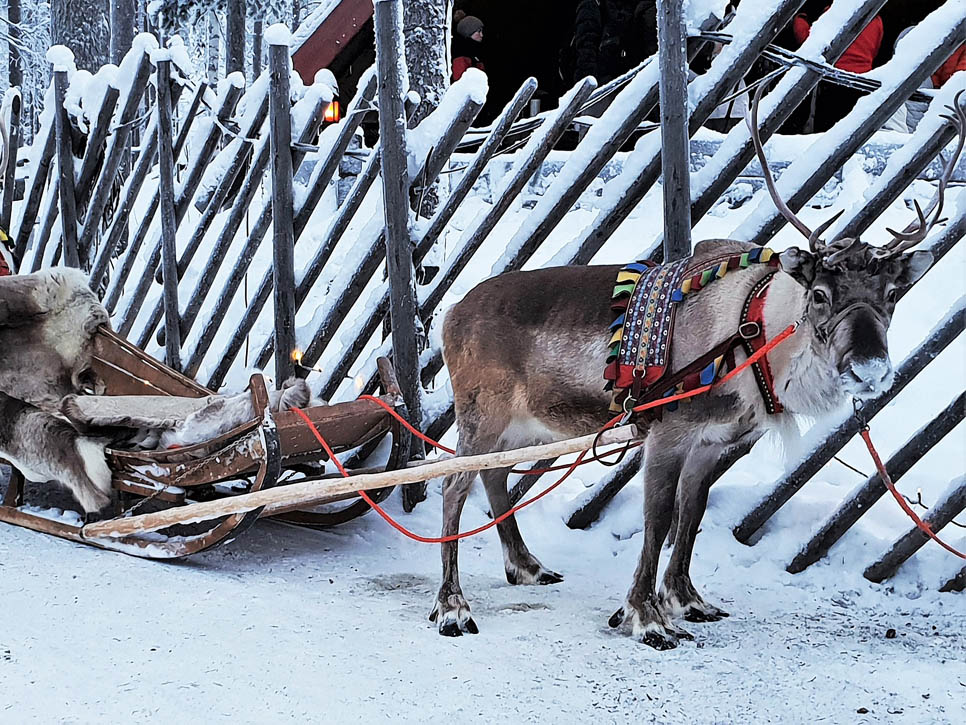
Reindeer: A Fun Post From Susan’s Green Cleaning .
The holiday season is here so we thought we’d share a few little-known facts about reindeer.
Female Reindeer Have Antlers
Reindeer are very unique herd animals. The name reindeer originated from the Norse word Hreindyri which means “horned animal.” Uniquely, reindeer are the only deer species in which both the male and females have antlers. This allows a defense to the females over their calves from predators, as they are much smaller and often even from the males in the herd. Antlers are the reindeers’ weapon against predators such as gray wolves, brown bears, and mountain lions. Reindeer have the largest antlers in the deer families. Their antlers fall off every year, the males in November, after the rut, their battle for female harems and grow back in February. The females keep their antlers usually until May after their calves are born. All reindeer antlers fall off every year and grow back bigger every year. An older male bull can grow antlers over 4.5 feet, obviously very heavy and thick. Females antlers can be over 1.5 feet. Their antlers are covered with a soft furry skin, velvet, which has blood vessels that provide extra oxygen to the growing bones. Eventually the velvet rubs off as the antlers become utilized. Reindeer use their antlers to search for food, especially in the snow seasons.
Caribou Are Reindeer
Caribou and reindeer are the same animal. Caribou refers to the wild herds that roam the tundra, especially in North America, while reindeer define the domesticated herds. The etymology of caribou originates from the French Canadian word Kaleboo, which also is descriptive of the deer, “one who paws for food”, for the way they use their paws to scratch aside snow when foraging for moss during the winter months. The antlers of the reindeer are also used to move snow, like snow shovels, in search of food. They lower their heads and push the heavier snow aside with their antlers, exposing mosses, grasses, and lichen.
Reindeer Migrate More Than Any Other Mammal
Reindeer are ruminants and travel at time up to 3,000 miles in a single year searching for food and habitat. Reindeer herd migrations are the longest of all mammals, including even penguins. Most of the long migrations occur in Northern Canada.
Reindeer Hooves Change By Season
Reindeer have shrinking hooves that adapt to the season and temperature. A reindeer’s hooves shrink by tightening to a smaller, harder hoof to enable better grip on ice and frozen snow on the tundra. As the melts begin and the ground softens, their hooves, or footpads, become soft, even somewhat spongy for traction. Their feet are covered by hair during the cold months. Reindeer roam in herds of a hundred or super herds of thousands in mass migrations.
Reindeer Have Special Hair
To keep from freezing to death in their extreme environment, reindeer are covered in hair, from their head over their noses to the bottoms of their feet. Not only does this protect their feet but aids in gripping on ice. Their bodies are covered with an undercoat of soft, dense wool for insulation and moisture. The soft undercoat is covered with hair called “guard hair” because it protects the animal from freezing temperatures. These guard hairs are long and hollow. They trap air and channel away moisture. This process is compared to humans getting goosebumps, when small skin molecules cause the hair follicles to stand up. These same guard hairs allow the reindeer to swim as necessary. They have been known to swim over five miles in an hour. They keep the underfur from becoming saturated. The guard hair also protect their noses. Their real nose, which is a hidden nose is under the hairy nose, can then inhale warmer air into the lungs as to not freeze in the lungs. The hidden nose can also have enhanced ability to smell, picking up scents of food, scents of impending danger.
Reindeer DO Have Red Noses (At Times)
Could Rudolph the Red-Nosed Reindeer really have had a red illuminated nose? Scientists say that it is very possible, even a good probability. They have found that reindeer noses have 25% more blood vessels than human noses do. The purpose is to keep their noses warm, thus warming up the frozen air before it is inhaled. The colder the temperature, and the more air that is breathed in, the more blood flow increases, causing their noses to become a rosy color. Interesting that there could be herds of Rudolphs under certain conditions.
Reindeer Can See Ultraviolet Light
Reindeer have adapted vision for ultraviolet light. This protects their eyesight and allows them to see food sources in the snow.
Reindeer Are Plentiful
At present it is estimated that there are over 5 million reindeer in the world including the domesticated herds raised on farms. It is believed that reindeer have been herded and domesticated for over 3,000 years. Many nomadic tribes moved their reindeer herds with them. These animals were used for food, for hides, pack animals, antlers for utensils, shovels, weapons, and for their milk. Arctic tribes still rely on these herds for survival.
In this state there are many reindeer farms, mostly near the northeastern Canadian border. Seattle and Leavenworth have farms.
The Largest Reindeer Predator Is TINY
The biggest threat to reindeer herds are mosquitos. The average deer in the wild lose over 4 pounds of blood a year from the huge mosquito swarms that attack in late summer as their stagnant tundra pools dry up. Mosquitos grow huge and prolifically in the spring and early summer in tundra conditions. These swarming mosquitos follow the herds and have caused reindeer stampedes in desperate efforts to lose the attackers.
Reindeer Do NOT Fly
But you knew this. Reindeer pull sleighs over snow, not over rooftops 🙂
